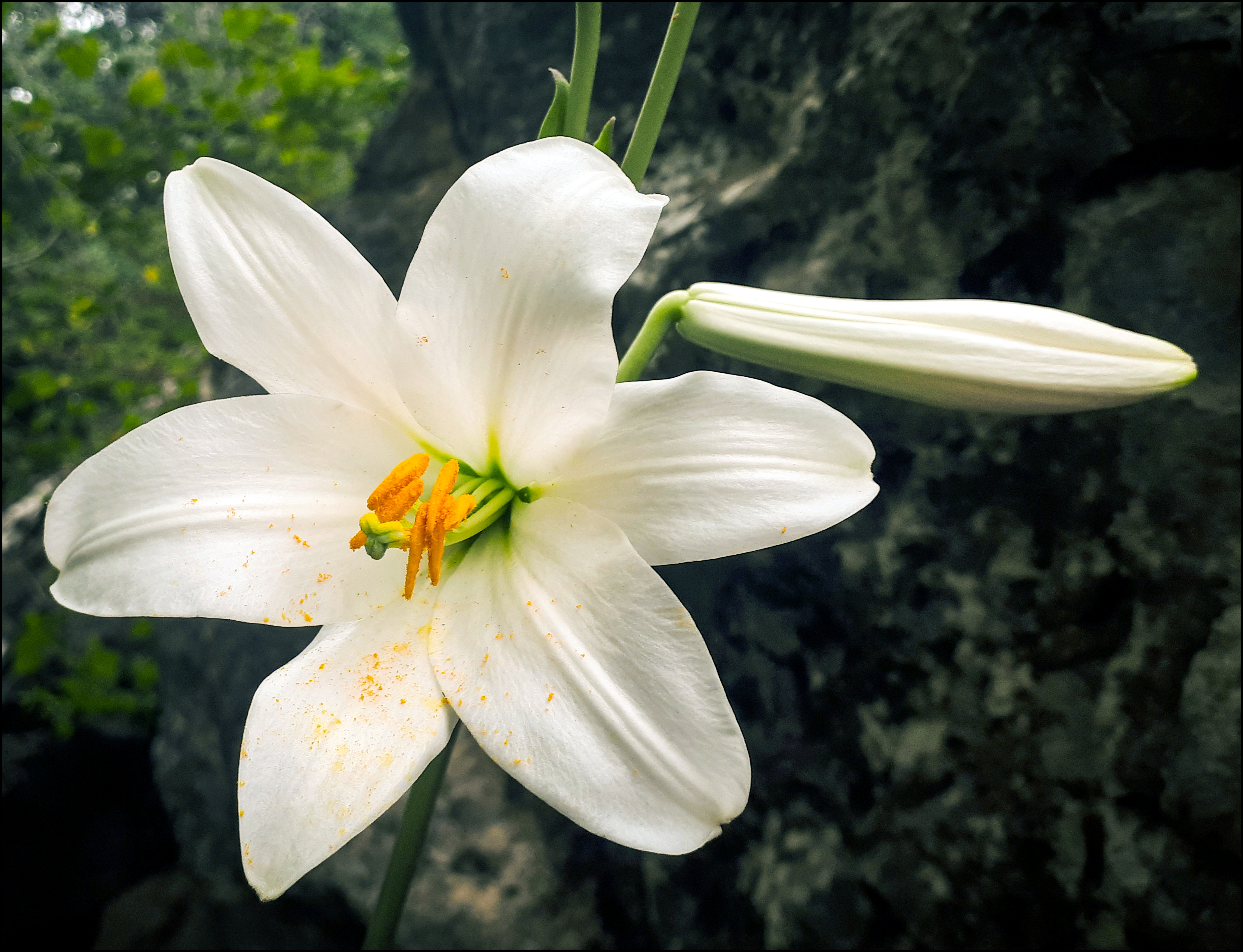Madonna Lily embroidery project

Parallel to the Guardian Angel project, I'm assembling materials for another project including goldwork and some needlepainting. As part of developing the project and refining the design, I need to determine how I want to work the flower blossoms.

I digitally traced the pattern from an antique church embroidery pattern book. While planning out the project-- oh, who am I kidding. I've already taken one crack at the whole project and it didn't work, so now I'm actually going back and incorporating lessons learned.
What I learned in the first project, in no particular order:
- Pick your ground fabric carefully so you don't get a dupioni slub in exactly the wrong place
- Au Ver a Soie has even more floss colors than DMC
- You can, with effort, decently blend wildly varying color values in a needlepainted area (but I'm still buying more shades in a different hue)
- Even if you use a very fine silk satin for an applique and back it with fusible web, it'll still want to poke threads out everywhere; try a habotai
- Padded satin stitch in AVAS Soie de Paris looks very nice for the lily petals, though the stitches are a little long; but they can be beautifully and effectively secured with very fine Japanese metallic thread
- Maybe plan just a bit more for the hard parts before committing materials and work on the easier parts?
So, as part of planning the lily blooms -- specifically, what to do with those wildly flying stamens -- I discovered that lilies have six petals, not the five suggested by the original design (and shown on the right side of the photo). This prompted me to re-draw the blossom from reference photos, and I've arrived at the one in the center of the photo. I quite like it, but I still have no idea what to do with the stamens.
My current plan is to work up a single lily blossom as a standalone project, so that I can experiment with completing the design without getting myself into too much trouble. I know from the previous attempt that I want to use more of the same blue-and-black shot dupioni for the ground, and that a white silk applique covers up the blue nicely so I can work pristine white satin stitch above it. I'll use silk habotai instead of silk satin for the applique, this time, and maybe cotton floss for the padding for a bit more grip on the silk stitches. Then, I can try to get the stamens sorted. I should already have all of the goldwork materials needed to finish this one.
Working with these silks again will be most delightful.